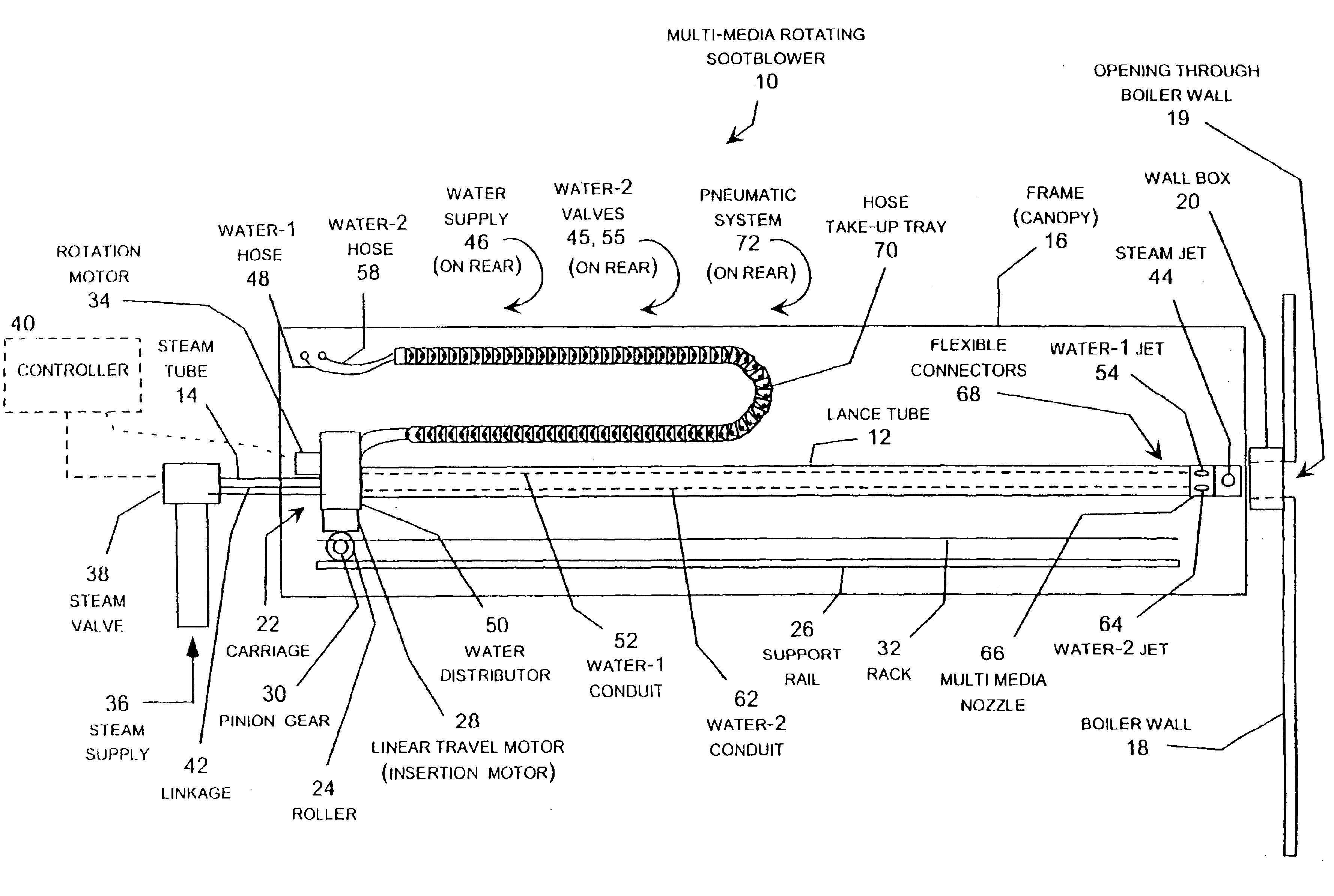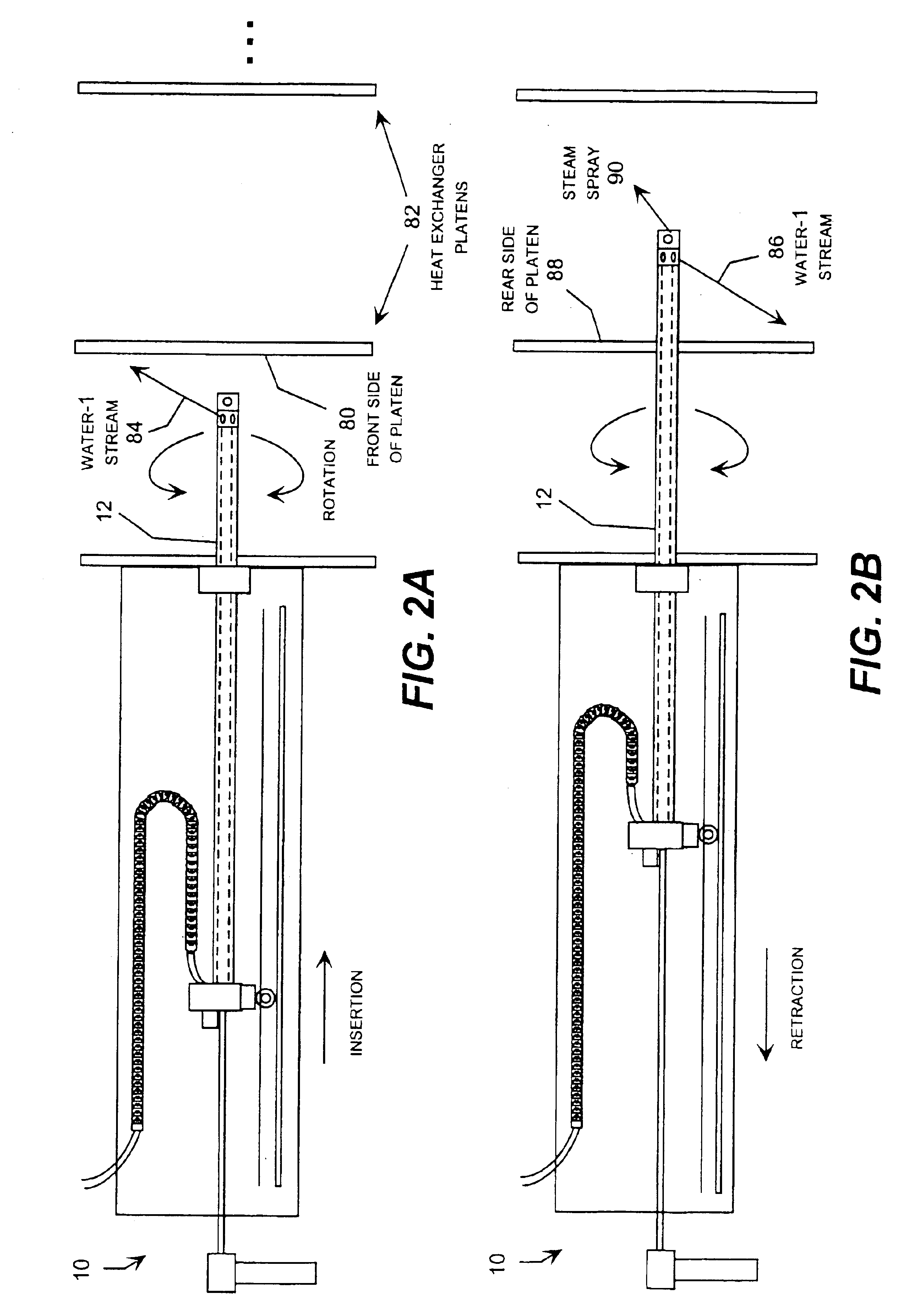Multi-media rotating sootblower and automatic industrial boiler cleaning system
- Summary
- Abstract
- Description
- Claims
- Application Information
AI Technical Summary
Benefits of technology
Problems solved by technology
Method used
Image
Examples
Embodiment Construction
[0062]The present invention relates to a multi-media rotating sootblower and associated automatic boiler cleaning systems. In general, the sootblower selectively applies two cleaning fluids, typically water and steam, which may be applied individually or in combination during a cleaning operation. However, the principles realized by the exemplary embodiments of the invention as described in this specification may be directly modified and extrapolated to develop sootblowers capable of applying more than two independently controlled cleaning fluids, having more than two independently controlled systems for applying any particular cleaning fluid, and for applying different types of cleaning fluids, such as air, solvents, sand blast streams, bead blast streams, liquid nitrogen or other very cold fluids, superheated plasma or other very hot fluids, or any other cleaning fluid that may be appropriate for a particular application. It should also be appreciated that the sootblower may be us...
PUM
 Login to View More
Login to View More Abstract
Description
Claims
Application Information
 Login to View More
Login to View More - R&D
- Intellectual Property
- Life Sciences
- Materials
- Tech Scout
- Unparalleled Data Quality
- Higher Quality Content
- 60% Fewer Hallucinations
Browse by: Latest US Patents, China's latest patents, Technical Efficacy Thesaurus, Application Domain, Technology Topic, Popular Technical Reports.
© 2025 PatSnap. All rights reserved.Legal|Privacy policy|Modern Slavery Act Transparency Statement|Sitemap|About US| Contact US: help@patsnap.com



